UX research is essential to good design. It gives you a realistic look at what your users want, and avoids assumptions in the research process.
Finding research participants, however, can be a little tricky. You’re likely looking for a certain type of user demographic, and connecting with those individuals isn’t always straightforward.
That being said, finding research participants doesn’t have to be a roadblock if you know where to look.
In this guide, we’re walking you through seven simple ways to find the participants you need. We’ll also share some best practices for recruiting participants for research, as well as the dos and don’ts of research participant recruitment.
To recruit participants for a research study, you have several options:
- Leverage your personal network
- Reach out via online communities
- Find research participants over social media
- Get internal feedback
- Curate a pool of enthusiastic customers
- Conduct guerilla testing
- Use tools that find test participants for you
Read on to find out more about each of these methods.
Best practices for participant recruitment
Before we dive into the nitty-gritty of finding test participants, let’s dig into the basics of participant recruitment and some best practices to keep in mind:
Recruit participants representative of your users
First off, make sure that the participants you recruit are representatives of your existing and potential users. Elba Ornelas, Product Designer at League, advises you to look at your user personas to drill down to the exact participants you need.
“[Personas] outline the main user profile that your product may be targeted for,” says Ornelas. “Bear special attention to the type of behaviors you are seeking to fulfill.”
Conducting screening interviews is one way to ensure you recruit the right participants. To make your user interviews a success, avoid asking leading questions that instruct a person to answer in a specific way.
Alternatively, you can use a participant recruitment tool that enables you to target candidates through custom demographic filters. This enables you to speed up the participant recruitment process, and spend more time focusing on the actual research.
Tip 💡
Involve users from different backgrounds, genders, races, ages, and abilities in the design and research process to ensure you create an inclusive and accessible product. Learn more in our Inclusive Design Guide.
Identify your user research method
Begin by deciding the UX research method you need to use as the number of research participants that you’ll need depends on the method you use.
For instance, when running quantitative research, you need a larger pool of participants—twenty or more—to ensure you collect statistically significant results. Ornelas shares, “You have the options of qualitative and quantitative research methods at hand. Both require “a specific number of people to conduct research, as well a specific set of materials to make it happen.”
Pro tip: Play it safe by recruiting backup participants to make up for any eleventh-hour cancellations.
Create a system to keep in touch with test participants
When you recruit participants for a research study, make sure to set up a system that will help you keep in touch with them and manage relationships for current and future studies. Having this information handy allows you to create a list of interested test participants that you can reach out to for different projects. For this, you can:
- Use a project management tool like Trello or Notion
- Create a spreadsheet to save participants’ contact information
- Take advantage of a participant management tool like Reach
Whether you go manual or automated, use this system to track the progress of participant recruitment. Have you shared screening questions with them? Label the progress as such. Have you approved the participant for research? Add them under the ‘research in-progress’ section.
If you’ve opted for a participant management tool, you should have access to more developed management options—for example, Reach from Maze allows researchers to:
- Curate a dynamic database of high-quality, responsive participants: Create your own pool of participants and segment by demographic, test metrics and campaign engagement.
- Access participants where and when tests happen: Complete the entire research workflow in one place, from creating tests to sharing with participants, and reviewing insights.
- Send targeted remote tests, faster: Collect relevant insights quickly by sending direct mazes in bulk as targeted email campaigns.
- Build empathy and understanding: Progressive profiling builds the entire picture for individual participants, showing you metrics like response time, participant rate and testing history.
Note: Just because a participant isn’t a good fit for your current project, it doesn’t mean they couldn’t be helpful for another one. Thank them for their time, let them know why they weren’t selected for this study, and keep the door open for future projects.
Offer incentives to encourage participation
It’s up to you whether you want to offer incentives or not. On the one hand, offering incentives such as payment, vouchers, or covering expenses like hotel and travel costs for in-person research encourages participation.
On the other hand, participants may not offer objective feedback in hopes of winning the incentive.
If you decide to give incentives, know that the type of incentive will depend on how long the research will take and the type of participants you need.
Ornelas adds, “Depending on the characteristics of the end-users, one type of incentive could be more suiting than others. For example, Amazon gift cards in case end-users are avid online buyers. Or, even offering something from the service, such as a free month of service, could be a good incentive.”
Build relationships with your target audience
Whether you pool participants online or with the help of other teams who work closely with your customers, always remember to keep in touch with them regularly. This way, you can develop a Customer Advisory Board or community of users for research and feedback.
Nabeena Mali, Head of Product at BfB Labs, told me they build relationships with their target audience to get feedback and generate ideas:
“As our user testing involves children, we have built strong relationships with local schools who have an interest in using our products,” Mali explains. “Not only do we work with them to test the product, but they are also involved in the co-creation workshops we run to generate ideas.”
A few things that help them strengthen their relationship with local schools: pairing up with schools that share their values and making the entire ux research process fun and engaging for their young audience.
Thanks to these relationships they built, Mali says, “often the schools were more than happy to be involved in early pilots and even helped facilitate further introductions to parents.”
Keeping these best practices in mind when recruiting research participants for your UX research study will ensure you collate the perfect testing pool. Now, let’s take a look at where exactly you can find the participants you need.
7 Effective ways to recruit research participants for a study
The exact method you’ll use to recruit research participants ultimately depends on your budget, time availability, and requirements.
That said, there’s a lot of options out there for participant recruitment, so you can find a method that suits your team. Here’s seven popular ways to source research participants.
1. Leverage your personal network
Ask your friends, colleagues, family, and wider network to help you with research.
One thing to bear in mind: ask people from your network to participate in research only if they fit your target persona’s bill or if your target audience is so wide that it includes everyone.
The upside to working with your network is that you can find enthusiastic research participants—especially if you have a broad network.
That being said, it’s essential you look out for potential cognitive bias. Turning to friends and family for research insights can lead to biased feedback, as these research participants have a personal stake in your success. They may also be hesitant to share critical feedback due to your personal relationship. Consider whether these factors might influence your research, and, if so, whether it could be better to look elsewhere for research participants.
2. Source participants for your study via online communities
If your immediate circle of connections doesn’t suffice, you’ve got plenty of other options. One of which is to tap into pre-existing online communities on Slack and Discord channels or Reddit forums.
Andreas Johansson, User Experience Specialist at Cogitel AB, says: “Find communities where people similar to [your] intended target users hang out. For example, say I was designing a website builder, then I’d go to communities for existing website builders, as well as web design communities on Reddit, Facebook, and more.”
Johansson suggests you can find the right community by taking to Google and searching for:
<name of community + forum>
I googled the same with an example target audience of freelance designers. Here’s what I found:
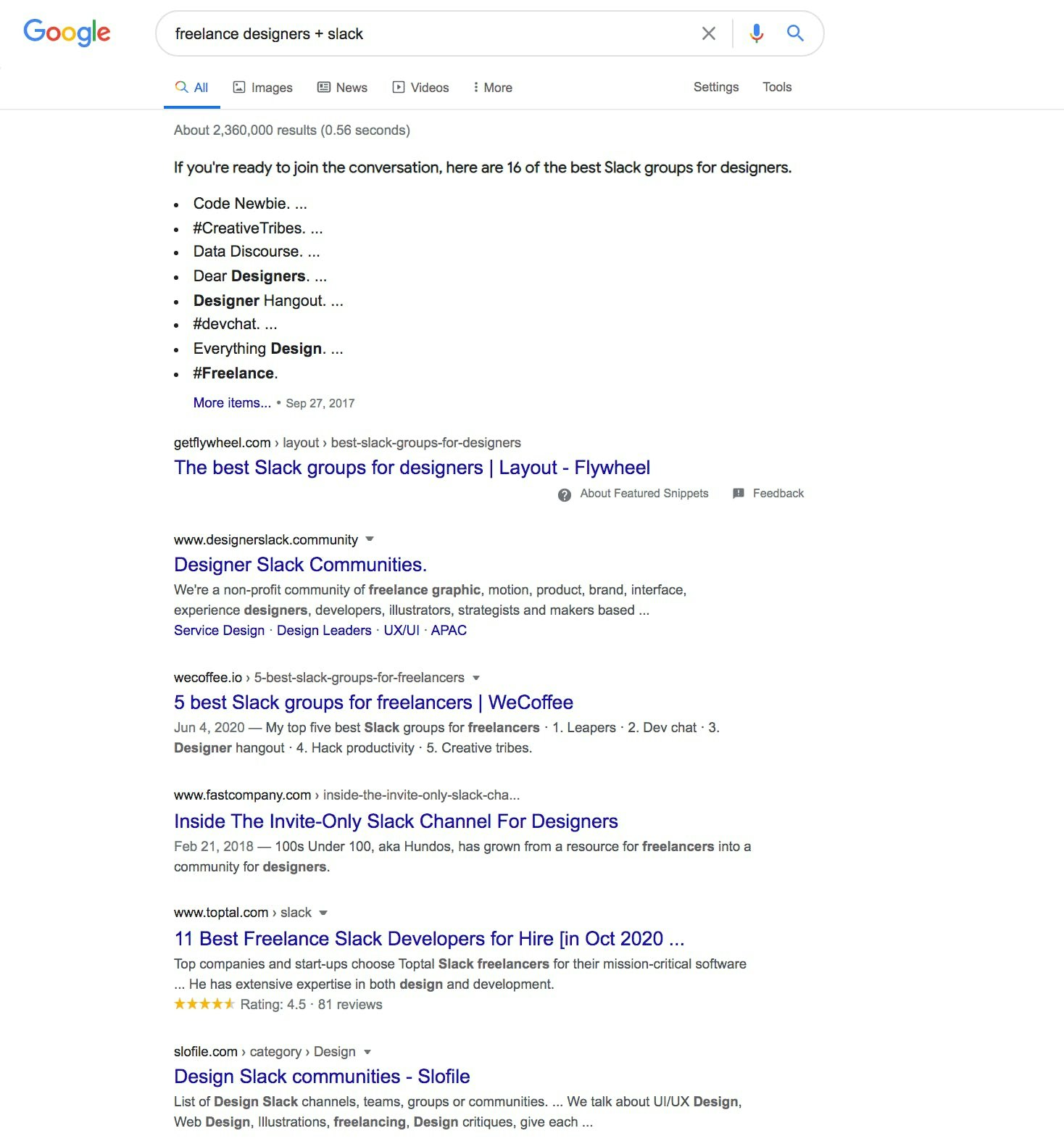
You can also go to Slofile, an online database of Slack communities, to find your target audience on Slack.
In some online communities, you might need a forum moderator’s permission to connect with research participants. In that case, it’s best to talk to them by explaining the purpose of your post in the community before posting your request.
A good way to encourage people to participate in your research is to use a community engagement approach with them rather than posting and disappearing.
When you show up as a regular name in a community and engage with its members, they’re more likely to recognize you and help than when you are a stranger posting for the first time.
Facebook and LinkedIn groups are great for this. As in the case above, you can take to Google and search for:
<community name + social channel>
You can use the social channel’s internal search bar too to find relevant groups. Filter them by city, if needed:
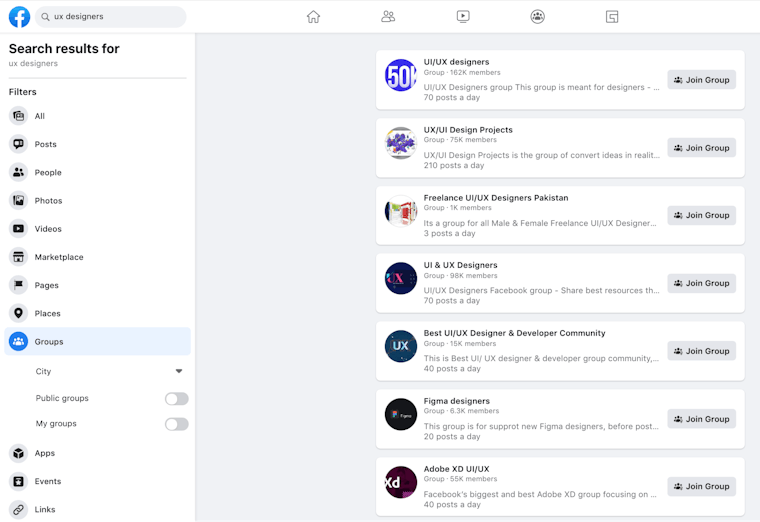
Alternatively, you can use LinkedIn cold outreach to reach specific research participants based on job role, location, and more filters. Start by typing in terms that describe your target user in the LinkedIn search bar—for example ‘UX researchers’. Then apply filters to narrow down on the demographic, industry they work in, and more.
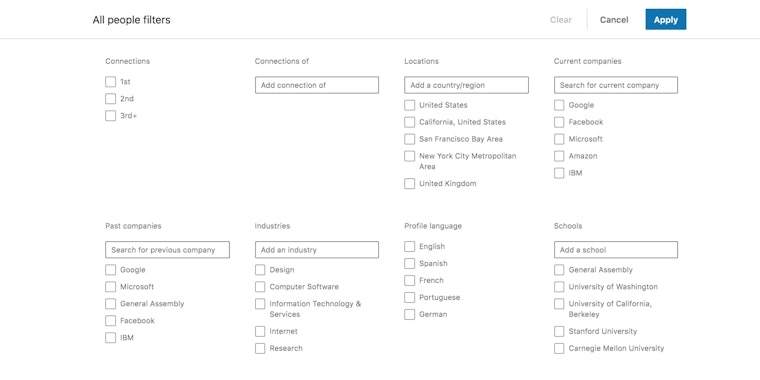
Once you have a list of potential participants, send them a LinkedIn message explaining your hunt for test participants.
Here’s a template to give you an idea:
"Hi [name],
I’m reaching out to you on behalf of my team at [company name] to express our interest in collaborating with you over [explain your research briefly]. I’m [name] and I work as [your role].
We find that you’re a good fit because [reason]. If this is of interest to you, you’ll only need to [explain research process]. It shouldn’t take over [time it’ll take], but for all your help, we’d be happy to [share incentive if planned].
If you’re in, please let me know and I’ll share more details with you.
Thank you,
[Your name]"
Ideally, get straight to the point in your message.
Explain briefly why you’re reaching out, followed by sharing context (who you are and what your research is about). Then explain what makes them a good fit. Don’t forget to mention any incentive that you’ve planned for participants. And, always close your message with a CTA, such as a link to the screening questions or the test.
One last tactic to gather research participants via social: Use paid ads to find target users, particularly when you’re validating a new idea or trying a new market to target for a consumer app.
For about $50-200, you can run targeted ads on Twitter, Instagram, and Facebook to reach out to people that aren’t active in the relevant communities and forums. For instance, they live in a different country or fall within a specific age range and skillset.
Add a link to a survey or a form to gather information on potential test participants. Use the info you gather to filter and screen participants before reaching out to them with research details.
4. Get internal feedback
This method is ideal if you have in-house experts that fit your target persona’s description—as Canopy did when testing its Help Center design with Maze.
Internal feedback can be great for gathering initial input on a problem that your product aims to solve. However, you can’t solely rely on internal feedback—you need your exact target audience to test the product further down the line.
Gathering internal feedback is best for product discovery—the process of framing a problem and getting a sense of what you need to do to solve it. It also helps with early-stage usability testing by sharing your wireframes or low-fidelity prototypes to test your design��’s functionality.
For example, you could conduct 1:1 interviews with internal people, request them to fill in surveys, or host focus group sessions to encourage discussions around your audience’s frustrations, behavior, and emotions with a product/issue.
One thing to keep in mind: don’t limit your research radius to just close colleagues. Use this method in combination with other methods listed here to recruit research participants that fit your target user personas for any subsequent research.
5. Curate a pool of customers for participant recruitment
The customer service, support, and sales teams are in constant touch with your customers—learning what bugs them, understanding their pain points, what new features they wish your product had, and much more.
Pair up with these teams to curate a list of enthusiastic customers who love your product and would like to help you improve it. Recruiting participants this way is helpful when you’re planning product updates, in-app tweaks, or introducing new features.
At Maze, for instance, we have a Customer Advisory Board of more than 90 customers who give us feedback on both new and existing features. Customer feedback from the committee has been incredibly valuable in our product development process.
“In one conversation with this customer, we went from a simple duplicate feature to the possibility of having an entire testing library in Maze. This is the hidden gold the Customer Advisory Board reveals,” shares Nelson Castro, Customer Success Lead at Maze.
Besides an advisory board, you can consider the following options to curate customers for research:
- Create an online community, for instance, a Facebook group, and invite customers to join it. For example, Freetrade has a community of users that they refer to for research and getting feedback. Alternatively, create your customer community in Slack like Braze’s Braze Bonfire Slack group, where they share links to their tests with customers interested in evaluating the prototype.

- Another option is to leverage WhatsApp or other messaging platforms to keep in touch with your customers and ask the community for research and feedback. For example, Tiendanube has WhatsApp user groups where they share links to design tests.

- Create an early access or beta group of current and prospective customers who are interested in testing your product for usability. Post-product launch, continue using this group as a research channel.
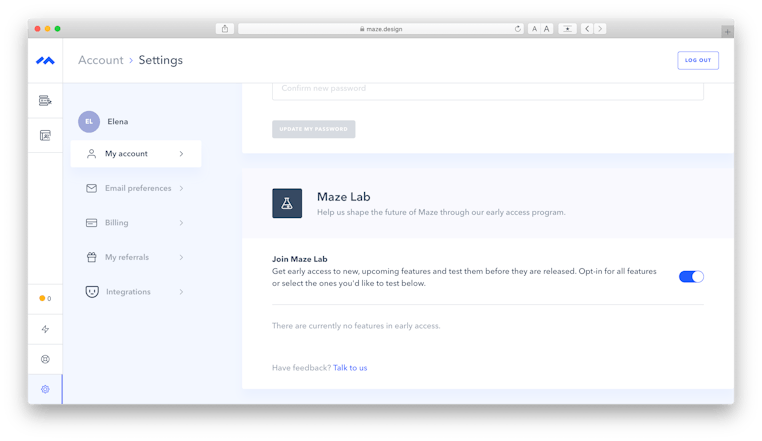
Now that you’ve all these ideas to create online customer communities, the question is: how can you get customers to join your community?
You can try these three options:
- Run an email campaign for onboarding customers. Send out an email informing customers about your group and ask if they’d be interested in joining.
- Create a page on your website dedicated to your community. Share links to it on your social channels or run a pop-up notification on your homepage to encourage folks to join.
- Offer an incentive to prospective participants to encourage them to get involved with your research. This could be a reduced monthly subscription to your platform, a gift card, or even a cash payment for their time.
6. Find test participants with guerilla testing
Have you ever encountered people on a busy street sharing samples of new products, be it perfume testers, a free CD or ice cream samples?
Guerilla testing is pretty similar. It consists in going to a busy place, stopping strangers on the street, and convincing them to share their thoughts on your design—likely a prototype or wireframe.
It’s a quick and affordable way of getting insights from regular users—making it a good option when testing products targeted at everyday consumers, like an online shopping app or healthcare portal.
However, guerilla testing does have some limitations. Firstly, you need to consider the validity and depth of the insights collected. People on the street are hardly invested in providing thorough feedback—they’re likely looking to move on as quickly as possible.
Secondly, it isn’t suitable for collecting feedback from specific demographics. You’re turning to the general public, not a select group of people who fit your demographic needs. Plus, you can’t assume demographic data based off appearances.
Due to these limitations, guerilla testing is best for general, untargeted user research. It’s a great way to connect with a wide variety of users quickly and affordably, but avoid using guerilla testing when looking to chat with a specific demographic of users.
7. Use participant recruitment and management tools that find test participants for you
Using a tool to find research participants can significantly speed up and streamline your recruitment process. While this method often requires payment, it can be well worth the cost to secure the right users, when you need them, for your study.
One key benefit of using participant recruitment tools is the ability to nail down the specifics, from location to demographics. For example, if you’re creating a medical app that helps young doctors in New Zealand find available medicines, you’ll need doctors in the country between the ages of 24 and 35 as your research participants. Participant recruitment software helps you hone in on that demographic.
On top of that, recruiting participants using research tools is great when recruiting lots of participants, such as for quantitative testing. Maze, for instance, offers two solutions to help you locate and manage the right participants:
- Quickly source research participants with the Maze Panel: filter participants based on your target demographic and get results in hours, not days
- Create a dynamic database of testers with Maze Reach: automatically group participants based on traits and metrics in order to create segments and send email campaigns for future research
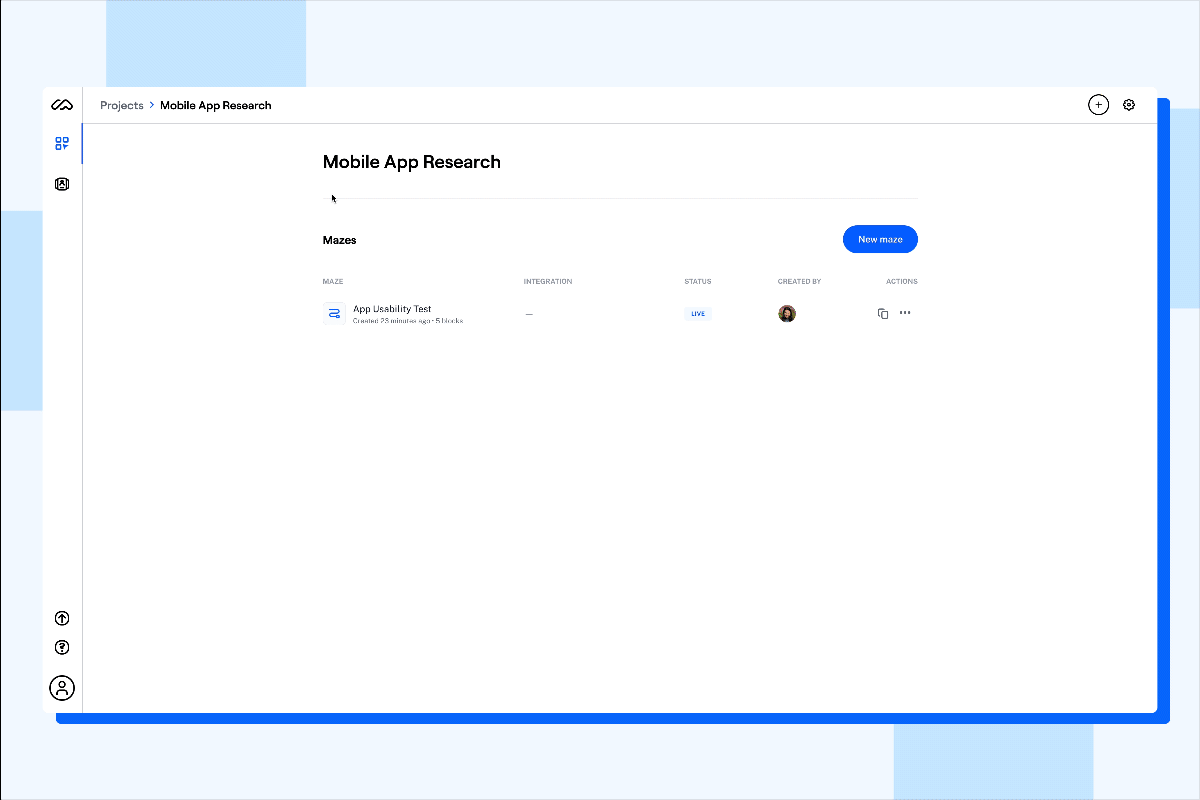
Reach by Maze
Dos and don’ts for recruiting research participants
Before we close out on recruiting research participants, let's run through some key dos and don'ts to bear in mind when recruiting users.
Wrap up thoughts
Without the right research participants, your user research is unlikely to provide the insights you need. However, you’ve got lots of options when it comes to finding research participants, so it’s easy to find the ideal solution for your budget and resources.
Consider your research needs and organizational priorities to select the best method for you, and remember that you can use more than one recruitment technique to find testers for your research. Tools like the Maze Panel and Reach can speed up and simplify the participant recruitment and management process, enabling you to spend more time on what matters: building better products and experiences for your users.



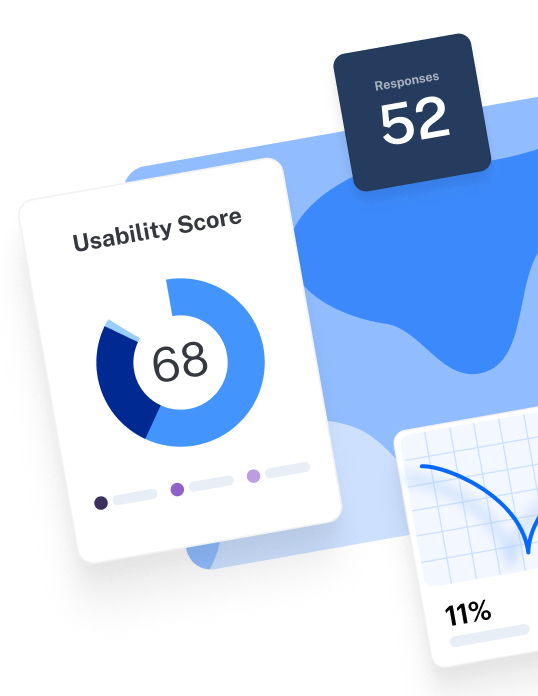
3. Find research participants over social media